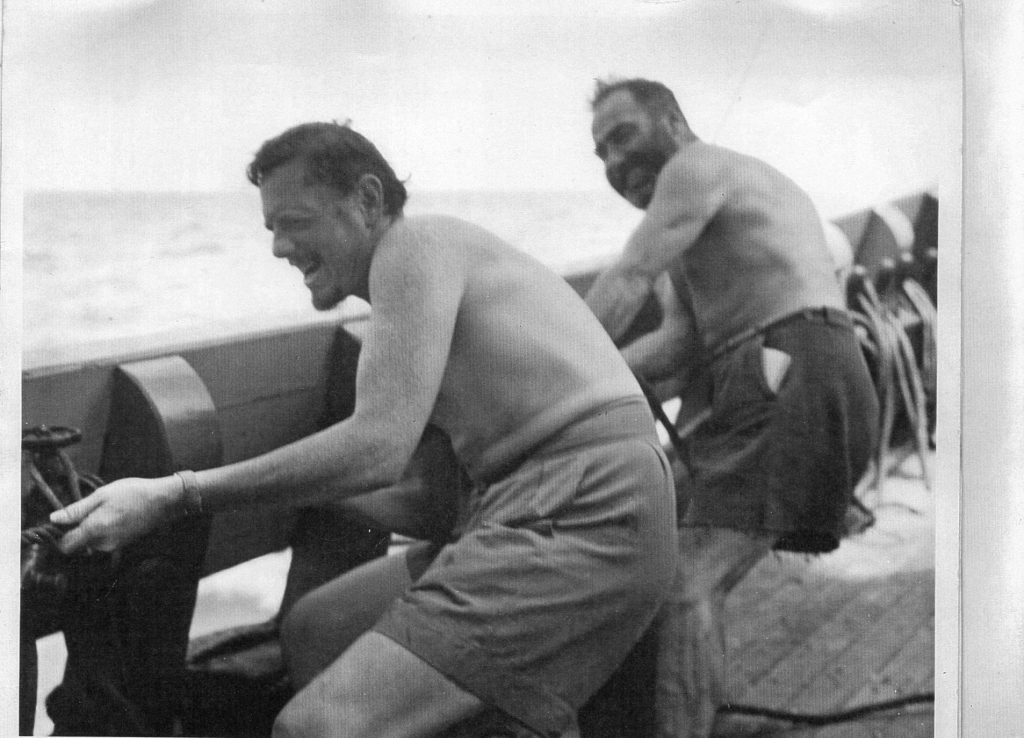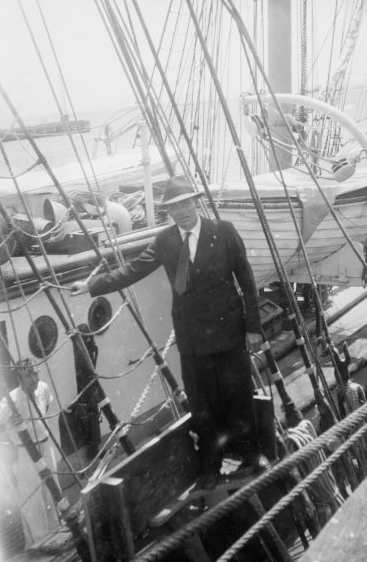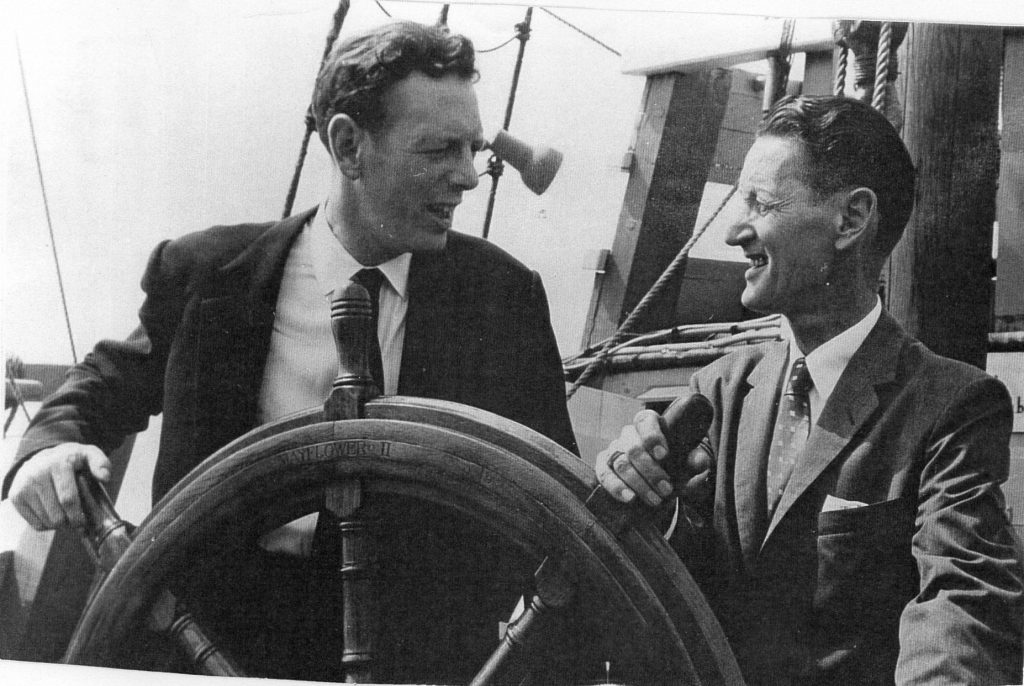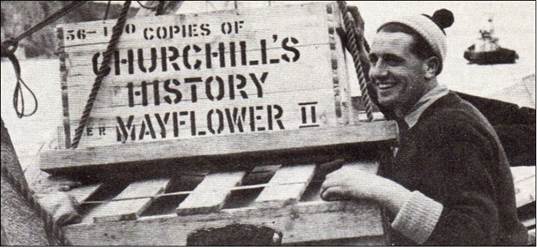*Guest post by Randal Charlton, author of The Wicked Pilgrim*
So now to the next question: how did Warwick Charlton build and sail the Mayflower II? Particularly since he was a man of very limited means, living paycheck to paycheck in an era of severe postwar austerity.
First off, he had a wonderful network of talented and powerful people that he had in part inherited from his well-connected parents as well the men he had bonded with during the war and the immediate postwar period. Some examples; Hugh Cudlipp later Lord Cudlipp head of the influential Mirror media group, Sir Francis de Guingand General Montgomery’s chief of staff and friend of president Eisenhower and Randolph Churchill the son of Britain’s famed war time leader Winston Churchill.
It was Randolph Churchill who lectured Warwick at one point. You know nothing about the sea and sailing, he told my father. You therefore have no credibility. Randolph Churchill introduced my father to Ian Fleming. Warwick was initially perplexed because he thought Ian Fleming wrote the James Bond books. But it turned out the Fleming had been in naval intelligence during the war and was very close to many of the admirals in the postwar navy. One by one Warwick persuaded them to know signed on as patrons and their names adorned his letter paper.

Warwick with his friend Dick Brennan, who was one of two cooks during the voyage – copyright Three Sisters Publishing Ltd.
Warwick used his research skills to work with one of the world’s experts on Britain’s history with sailing ships, a Dr R.C. Anderson, the head of Maritime research at Greenwich Museum in south London. Among other things Dr Anderson introduced Warwick to Henry Hornblower II in Plymouth, Massachusetts. In fact, Henry Hornblower had been researching the possibility of rebuilding the Mayflower in America and given up. Even this wealthy son of the eighth largest brokerage house in America balked at the estimated cost but he offered to supply Warwick with the design and construction plans that he had obtained. He also agreed to supply Mayflower II with a home in Plymouth Massachusetts.
Warwick then turned his attention to fund raising in an age when no one seemed to have any spare money. He produced a range of high-quality products all carrying the Mayflower image – neckties, dinner plates, medallions, yacht flags, cups, and commemorative stamps and he brought out a new paper called Mayflower Mail which was published regularly.
Then one day, at a particularly low point, a man walked into Warwick’s office and said he could guarantee a story in National Geographic if Warwick would let him sail as one of the crew. That man was Allan Villiers, an Australian, who Warwick described as having the aura of the salty sea about him. My father promptly offered Villiers the job of captain and handed him a massive pile of letters from people of all ages seeking to sail on the Mayflower. After Villiers had departed Warwick picked up Villiers resume and discovered to his delight that the man he had selected solely because he could guarantee an article in National Geographic brought with him the added bonus of being one of the most talented and experienced captains of tall ships alive.

Captain Alan Villiers aboard the “Joseph Conrad“, Melbourne, ca. 1955. Photo taken by Sarah Johnston Chinnery – public domain
Throughout the two and half years of the project Warwick worked his newspaper contacts mercilessly with a constant stream of stories. One of them appeared in a weekly magazine read by Stuart Upham, at his shipyard in Brixham, Devon who was perhaps the last builder of large wooden sailing ships in the UK.
So before long my father had several pieces of the Mayflower puzzle in place- the backing of the Britain’s best sailors, including the commander of the Queen Elizabeth cruise liner, he had a design for the ship, a shipbuilder dedicated to historical accuracy, a captain and crew, a partner in America and money coming in from his various fund-raising schemes.
However, sales from neckties and other items was not enough; nowhere near. At this point my father demonstrated another talent – the power of lateral thinking. Here are three examples.
He received a call one day from Stuart Upham at the shipyard in Devon. Construction is being seriously delayed, Warwick was told. Dozens, sometimes hundreds of people are turning up every day unannounced to see what is going on. The men can’t get on with their work. In no time at all Warwick had the women who worked as secretaries in his tiny office, fitted out in Pilgrim costumes and transported 200 miles down to the shipyard. There they gave guided tours for a modest fee and the money went directly to help the rapidly increasing cost of the ship’s construction. Warwick also collected wood chipping offcuts from the construction which were sold to a company who want to give them to their clients as Mayflower souvenirs.
It still was not enough. It was then Warwick hit on the idea of enlisting the support of industry. Companies who provided support in kind- everything from ropes, to the right type of wood, to promises of food and medicine for the trip – they all received free advertising and editorial recognizing their donations in Warwick’s Mayflower Mail.
He was still short, so when a friend suggested that he offer British industry the opportunity to buy treasure chests to be loaded into Mayflower II carrying examples of goods and services, Warwick jumped on the idea. He commissioned a Glasgow cabinet maker to produce the treasure chests. By this time Warwick had met and become good friends with John Sloan Smith who was the CEO of Mayflower Aero Transit in America. Sloan Smith offered to transport the treasure chests across the country for exhibition at America’s leading department stores.
This effort was perhaps ahead of its time because it was well before the concept of corporate sponsorship was to become widely accepted. At the time Warwick was accused of dirty commercialism – and, as we will see, he had other troubles brewing too.


